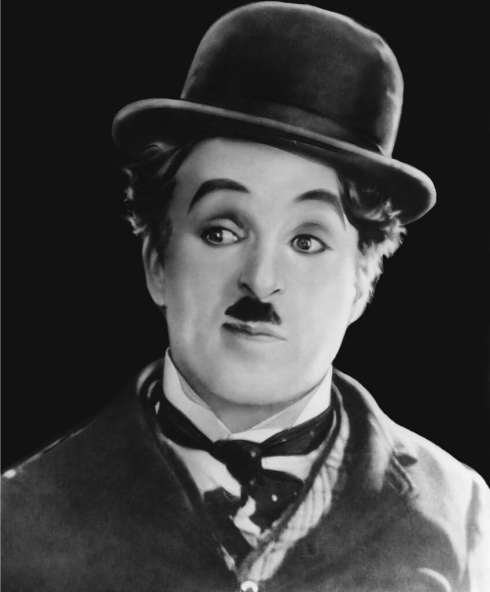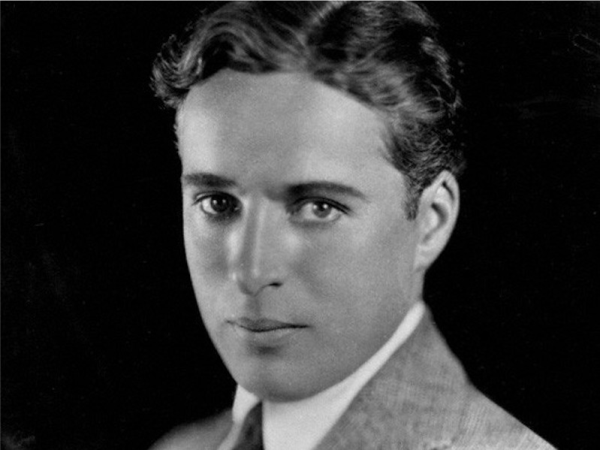Charlie Chaplin: Biography, Age, Spouse, Chain, Quotes, Movies

Charlie Chaplin performed with a children's dance troupe before making his mark on the big screen. His character, "The Tramp," used pantomime and peculiar motions to become a recognized personality of the silent-film period. The United Artists Corporation was co-founded by Chaplin, who later turned to direct and produce movies, including City Lights and Modern Times.
Initial Years
Charlie Chaplin, one of the earliest film stars and a legendary personality of the silent era, revolutionized the business in ways few could have envisioned. He is well recognized for his role as "The Tramp," an endearing tiny man with a cane, mustache, and bowler hat. The story of Chaplin's journey to stardom is an authentic rags-to-riches one. On April 16, 1889, in London, England, he was named Charles Spencer Chaplin. Shortly after Chaplin was born, his infamously intoxicated father abandoned his mother, Chaplin, and his older half-brother, Sydney. The mother, a vaudevillian and music hall performer known as Lily Harley, was left to care for Chaplin and his brother.
For a few years, Chaplin's mother could maintain her family even though she would later experience serious mental illness and need to be admitted to an asylum, but during a performance that would put her youngest son in the spotlight, Hannah mysteriously lost her voice in the middle, which led the production manager to usher Chaplin, a five-year-old who he had heard sing, onto the stage to take her place.
Chaplin enthralled the crowd by being himself and taking a comic stance (at one point, he mimicked his mother's breaking voice), but for Hannah, the experience signaled her demise. She never found her singing voice again, and soon she was broke. Chaplin and Sydney were forced to relocate temporarily to the harsh workhouses of London.
Earlier Years
Chaplin was determined to succeed in show business because of his mother's passion for the stage. He joined the Eight Lancashire Lads, a clog-dancing ensemble, in 1897 by taking advantage of his mother's connections. Short-lived and not particularly lucrative, Chaplin was forced to find other ways to support himself.
Although Chaplin later recalled that he had worked as a newsvendor, printer, toymaker, doctor's boy, and other jobs, he maintained that his ultimate goal was to become an actor. Later on, he was offered further stage work. Chaplin made his acting debut as a pageboy in a Sherlock Holmes production. From there, he toured with the Casey's Court Circus vaudeville troupe. In 1908, he teamed up with the Fred Karno pantomime company, where Chaplin achieved fame as the Drunk in the comedy A Night in an English Music Hall.
Chaplin first encountered American culture when performing with the Karno company. There, he caught the attention of movie producer Mack Sennett, who hired Chaplin on a $150 per week contract.

Movie Career
Chaplin made his screen debut with the mediocre one-reeler Make a Living in 1914. Chaplin decided to play a single, recognizable character in Sennett movies to set himself apart from the other actors in the cast. The outcome was the creation of "The Little Tramp," which was first seen by viewers at the Kid Auto Races in Venice (1914).
In 1915, Chaplin left Sennett for the Essanay Company, which was willing to pay him $1,250 per week. Chaplin gained popularity with Essanay; by this point, he had hired his brother Sydney to serve as his business manager. The following year, Chaplin made 35 film appearances, including Tillie's Punctured Romance, the first feature-length comedy.
The Tramp was one of the 14 movies Chaplin produced in his first year at the studio (1915). Chaplin's character unexpectedly emerges as the hero in the story, regarded as the actor's first classic, after saving the farmer's daughter from a gang of robbers.
Chaplin had just been out of the vaudeville business for three years when he was 26 and already a star. He had switched to the Mutual Company, which offered him a staggering $670,000 annual pay. Chaplin became wealthy due to the money, but his desire to create art didn't seem to be affected. Mutual was the production company behind some of his best works, including One A.M. (1916), The Rink (1916), The Vagabond (1916), and Easy Street (1916). (1917).
Chaplin earned a reputation as a demanding perfectionist via his work. Numerous takes were frequently required due to his passion for experimentation, and he frequently requested the reconstruction of an entire set. It was also not unusual for him to start filming with a celebrity actor, realize he had chosen the wrong person, and then switch to a new actor, but the findings were challenging to challenge. Chaplin's career expanded significantly more in the 1920s. The Kid (1921), The Pilgrim (1923), A Woman in Paris (1923), The Gold Rush (1925), a picture Chaplin later said he wished to be remembered for, and The Circus were among the important films he produced during the decade.
Later Movies
In the 1930s, Chaplin continued to make entertaining and captivating movies. He released City Lights in 1931, a critically acclaimed and financially successful film featuring music Chaplin had composed. Modern Times (1936), a scathing indictment on the status of the global political and economic infrastructures, received even more praise. The 18-month global tour Chaplin took between 1931 and 1932, during which he experienced great economic anxiety and a strong increase in nationalism in Europe and elsewhere, contributed to the creation of the picture, which did use sound.
The Great Dictator (1940), which subtly mocked the regimes of Hitler and Mussolini, had Chaplin speaking much louder. Around the time the movie came out, Chaplin declared, "I want to see the return of decency and goodwill." I'm just a person who wants to see this nation become a true democracy.
Chaplin, however, was not popular everywhere. His romantic relationships resulted in criticism from various women's organizations, resulting in him being denied entry into some U.S. states. Chaplin didn't hold back when it came to criticizing the injustices he perceived occurring in his adopted nation of the United States of America as the Cold War era came into being.
Right-wing conservatives started to target Chaplin shortly after. John E. Rankin, a Mississippi representative, pressed for his deportation. The American Attorney General complied in 1952 when he declared that Chaplin, who was departing for Britain on holiday, would not be allowed to return to the country unless he could demonstrate his "moral worth." Infuriated, Chaplin bid farewell to America and moved to a little farm in Corsier-sur-Vevey, Switzerland.
Wife and Kids
Chaplin's life away from the camera helped him achieve equal fame. He had a lot of affairs with actresses who appeared in his films, but some outcomes were better than others. He swiftly wed 16-year-old Mildred Harris in 1918. After a brief two-year union, he married again in 1924 to actress Lita Grey, who was 16 then and whom he had chosen for the role of Gold Rush. Unhappiness permeated every aspect of the union, giving Chaplin two sons (Charles Jr. and Sydney) but was brought on by an unforeseen pregnancy. They split up in 1927.
Chaplin remarried in 1936 to Paulette Goddard, a chorus girl best known for her role in the movie. In existence until 1942. After that, Chaplin engaged in an unpleasant paternity dispute with another actress, Joan Barry, in which testing revealed he was not her daughter's biological father. However, a jury nonetheless decided he should still pay child support. Oona O'Neill, the 18-year-old daughter of author Eugene O'Neill, and Chaplin were married in 1943. Unexpectedly, the couple would have a successful marriage and eight children.
Death and the Last Years
Chaplin made one last journey to the nation in 1972 when he received an honorary Academy Award and was reaching the end of his life. Only five years had passed since Chaplin's last picture, A Countess from Hong Kong (1967), his only color production. The movie didn't do well at the box office, even though it starred Marlon Brando and Sophia Loren. When Queen Elizabeth II knighted Chaplin in 1975, her reputation increased. In the early hours of December 25, 1977, Chaplin passed away at his home in Corsier-sur-Vevey, Vaud, Switzerland. He passed away at his bedside with his wife Oona and seven of their kids present. In a twist that could have easily come from one of his movies, Chaplin's body was taken by two thugs who demanded $400,000 for its return shortly after being buried in his cemetery near Lake Geneva in Switzerland. Chaplin's body was found 11 weeks after the men were detained.